If you’ve ever stopped outside a bakery window and admired bread loaves the way a visitor to the Louvre might pause in front of a painting, then you understand a little something about the artistry of food.
With bread as with many other foods, the presentation is closely aligned with the preparation. Those beautiful loaves in the window have gone under the knife of a skilled baker who understands the ins and outs of bread decoration.
Decorative bread scoring involves deliberate cuts or slashes made on the surface of bread dough before baking. These incisions help control the expansion of dough, allowing steam to escape during baking while providing a way for bakers to express their creativity on their loaves.
The results are often as beautiful as they are delicious. In this guide to scoring techniques, we will delve into some of the most popular tools and methods used by bakers and home cooks alike to elevate their baked goods into works of art.
The Essential Bread Scoring Toolkit
Different tools accomplish different designs and affect each loaf in unique ways. At the most basic level, a baker will score the bread to help control the expansion of the dough during baking; scoring helps control how the carbon dioxide that builds up during baking escapes. The slashes, whether long and deep or short and shallow, help provide consistency and predictability to how the dough rises.
Students at Auguste Escoffier School of Culinary Arts can find out more about the science and the terminology in bread-making classes, which also cover the tools bakers use. To execute some of the most popular scoring techniques, some of those tools include:
- Bread Lame: A bread lame typically consists of a handle with a straight or curved razor blade and can be used for different types of scoring. A curved blade is generally useful for creating flaps or “ears,” while a straight blade creates a straight, spread-out cut.
- Grignette: The term grignette is often used interchangeably with lame, though a grignette is typically even sharper than a lame and is considered a slashing tool. It can make more intricate and precise swirls and curves.
- Bench Scraper, Razor Blade, Scissors: While primarily used for dough handling and shaping, a bench scraper can also be used for scoring. Its flat edge can create straight or curved cuts on the bread’s surface. Razor blades can be used in place of lames, and scissors can come in handy for breads that are coated with nuts or seeds.
- Stamps: Although not technically a scoring tool, some bakers also use decorative stamps to create designs and patterns.
- Scoring Templates: Scoring templates are patterns or stencils that you can place on top of the bread dough before scoring to create specific designs or patterns. They help ensure consistency in your scoring.
- Safety Equipment: Safety when scoring should not be overlooked. Using protective gloves or a finger guard can help prevent accidental cuts while scoring.
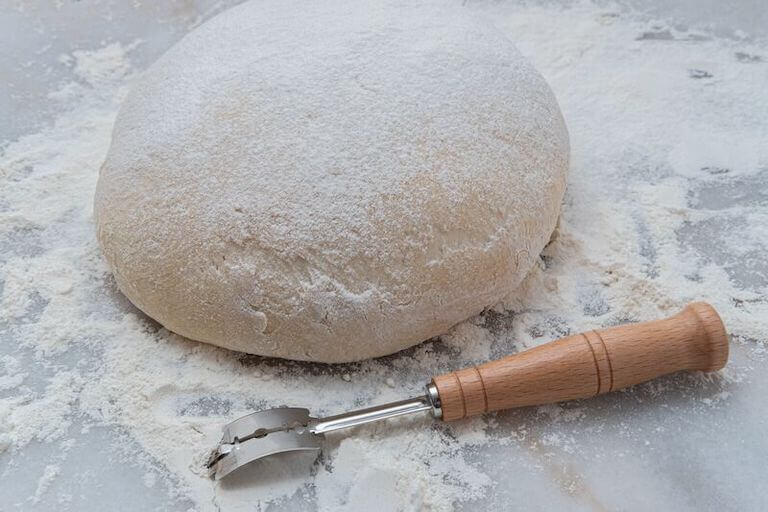
Dough is scored after its final proofing and before it goes into the oven.
Preparing Your Dough for Scoring
Dough needs to be prepped before scoring to make sure the final loaf bakes properly and the scoring serves its culinary and aesthetic purposes.
Once initially proofed, gently transfer the dough onto a clean, lightly floured work surface, taking care not to deflate it excessively. You can then shape it into the desired form, whether that’s a round loaf, baguette, or another shape, using gentle but deliberate motions. This shaping step helps create a smooth, taut surface for scoring and contributes to the bread’s final structure.
Most importantly, allow the dough to complete its final proofing, or rise, giving it time to develop the desired texture and flavor. Once that’s done, you’re ready to score!
5 Popular Bread Scoring Techniques
Now that you’ve gathered your tools and prepared your bread, it’s time to start scoring. Here are some of the most popular bread scoring techniques:
1. Classic French Baguette
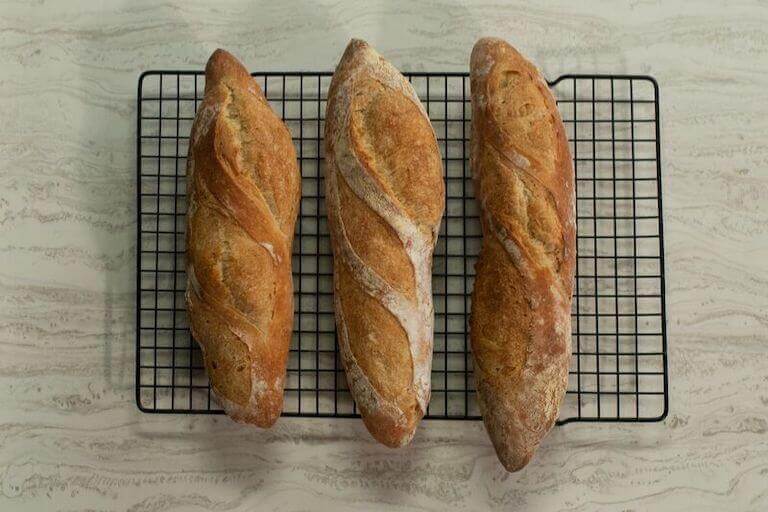
The tops of baguettes feature a classic scoring technique.
Perhaps the most iconic of all bread scoring techniques, the classic French baguette is often adorned with a series of diagonal slashes along its length. These diagonal cuts are not only visually appealing but also allow the dough to expand evenly, creating the characteristic elongated shape of the baguette.
2. Boule Cross Scoring
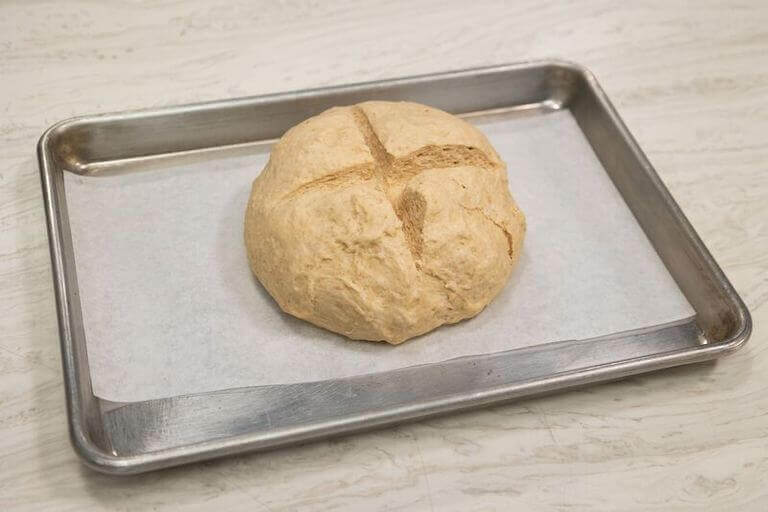
A boule often showcases a criss-cross or tic-tac-toe pattern on top.
When it comes to round or boule-shaped loaves, a common scoring pattern involves creating a cross or “tic-tac-toe” pattern on the top. This technique provides controlled expansion, helps prevent the dough from bursting randomly, and adds a rustic charm to the finished bread.
3. Ear Scoring
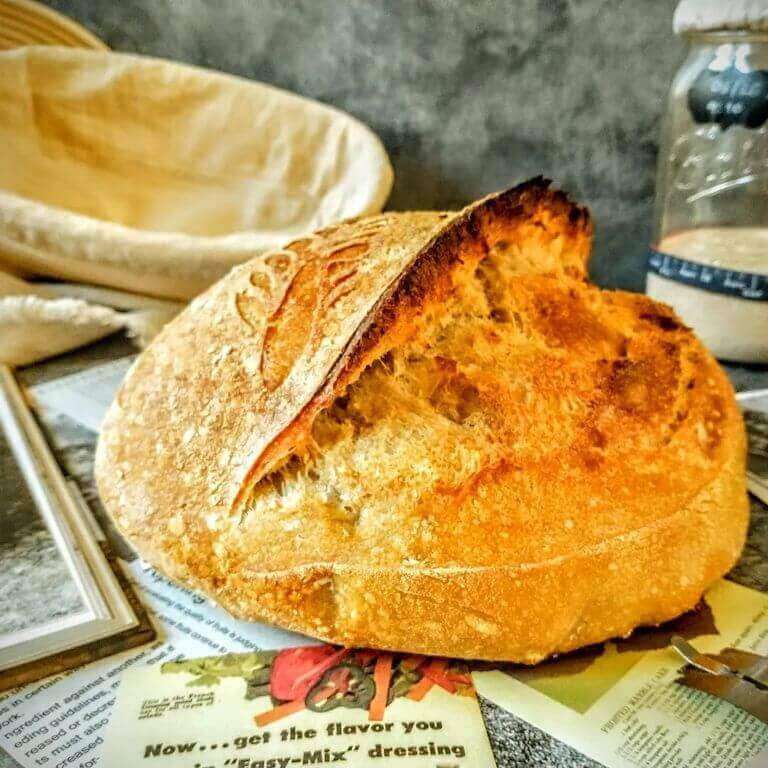
Sourdough bread is known for its distinctive ear or ears, like this large ear created by Online Baking & Pastry Arts Graduate, Lilian J.
To create an attractive ear or “grigne” (French for “slash”) on a round loaf, bakers make a single deep cut or a few curved cuts on the bread’s surface. This technique results in a prominent raised edge during baking, adding both visual interest and textural contrast to the crust.
4. Leaf or Vine Scoring
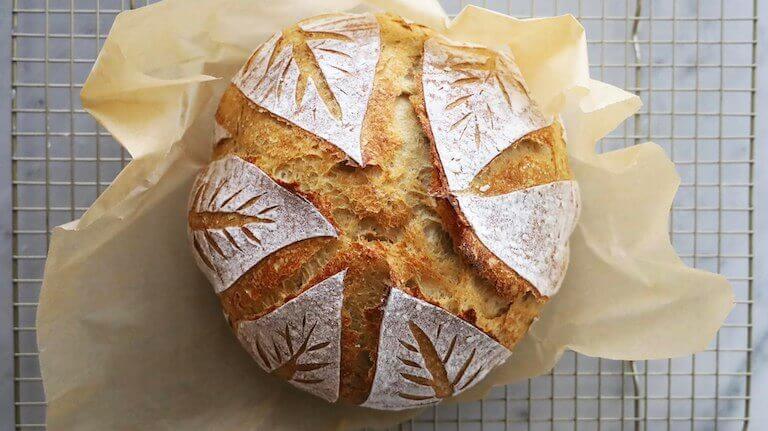
Leaf scoring emulates patterns found in nature. This loaf was created by Escoffier Online Baking & Pastry Arts Graduate, Danny N.
Artistic bakers often take inspiration from nature, using leaf or vine-like scoring patterns to adorn their loaves. These intricate and decorative cuts can turn a simple loaf into a work of art, showcasing the baker’s creativity and skill.
5. Geometric Patterns
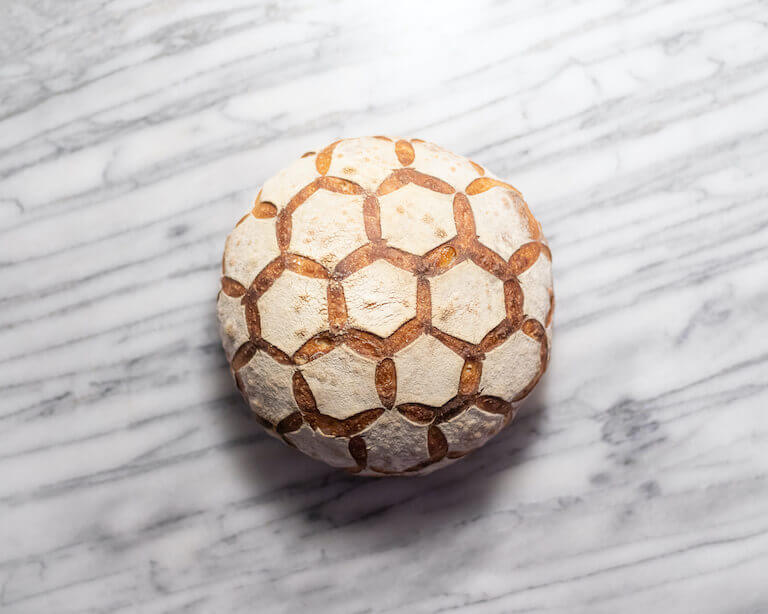
Geometric patterns can create more texture and interest on bread.
Some bakers opt for geometric patterns such as squares, diamonds, or triangles to score their bread. These patterns can be used on various bread shapes and add a sense of precision and symmetry to the finished product.
Bread Scoring Transforms Baking into Art
The practice of scoring bread is both an art and a science; it allows bakers to ensure their bread bakes correctly while displaying their decorative choices. Choosing the right scoring technique can elevate a simple loaf of bread into a work of culinary art, making this practice a beloved tradition in the world of artisanal baking.
To find out more about elevating your bread baking and decorating skills, check out Escoffier’s Baking & Pastry programs, where students can take a deeper dive into the entire bread-baking process, from start to finish. This includes the science of baking at different temperatures to handling and shaping dough correctly.



